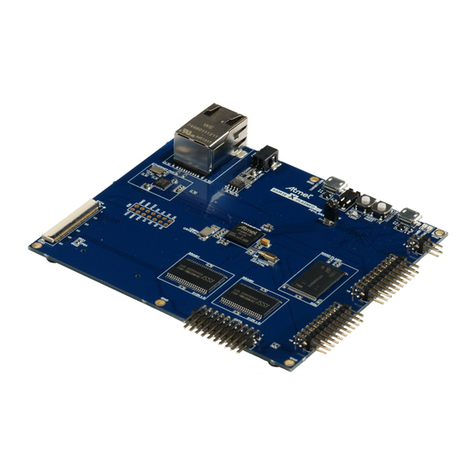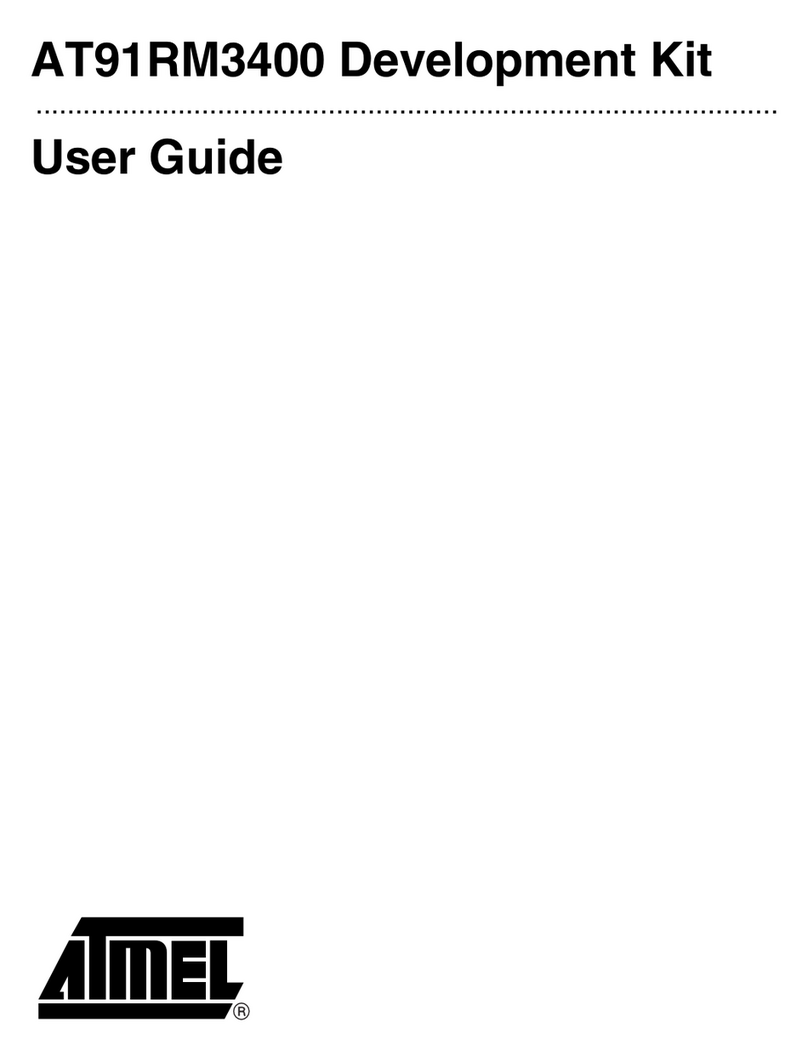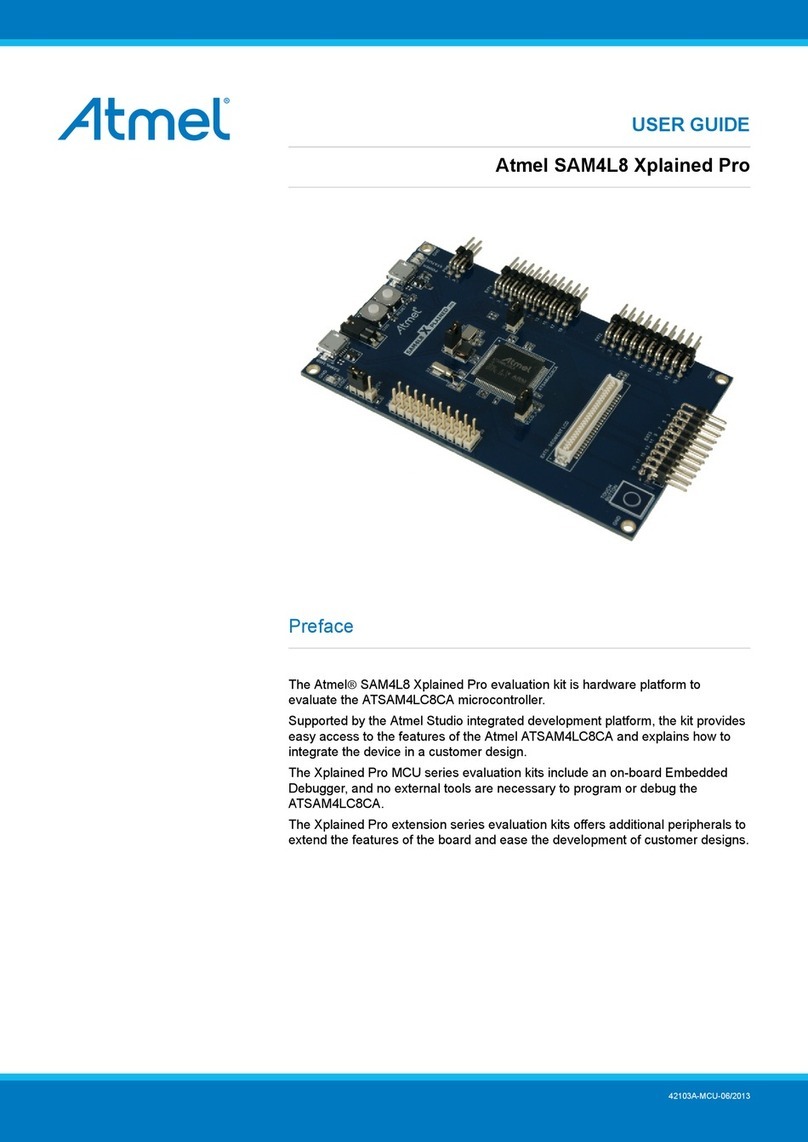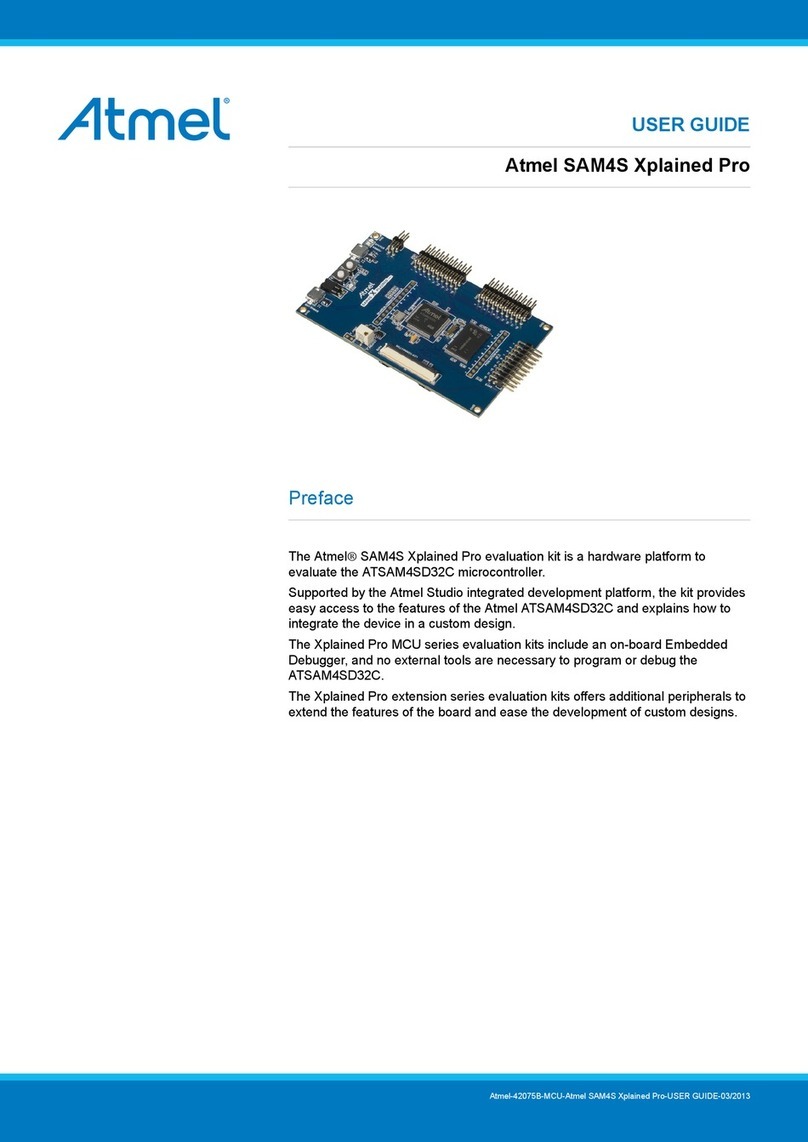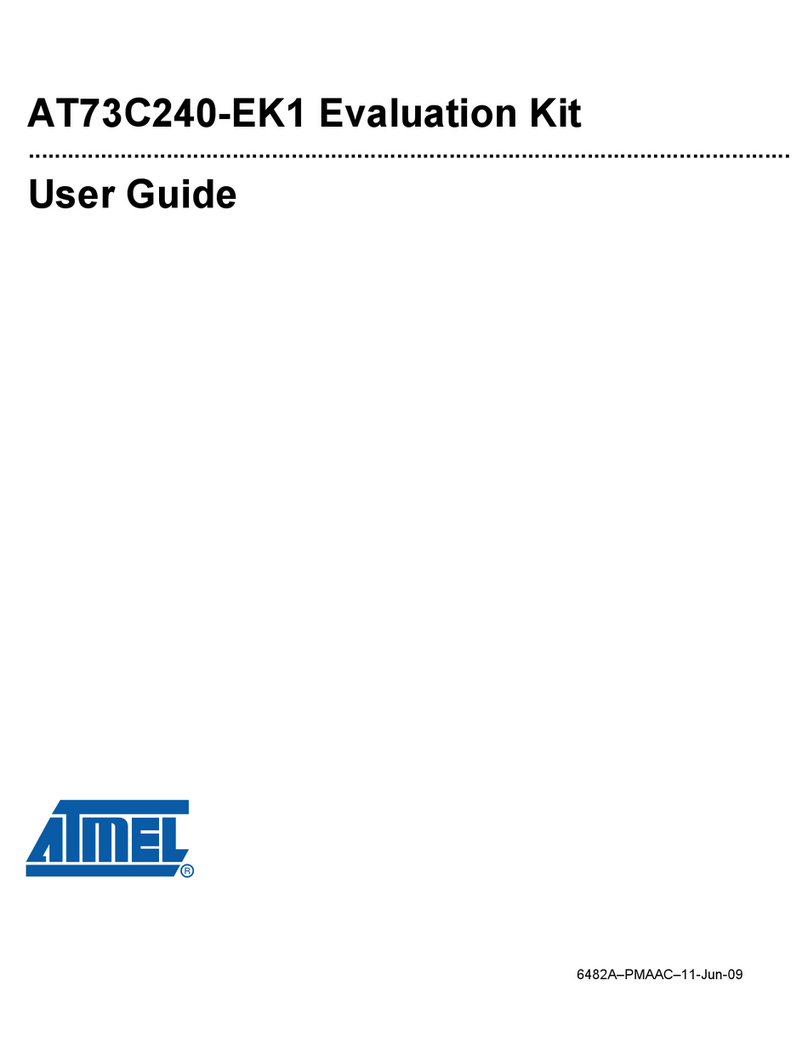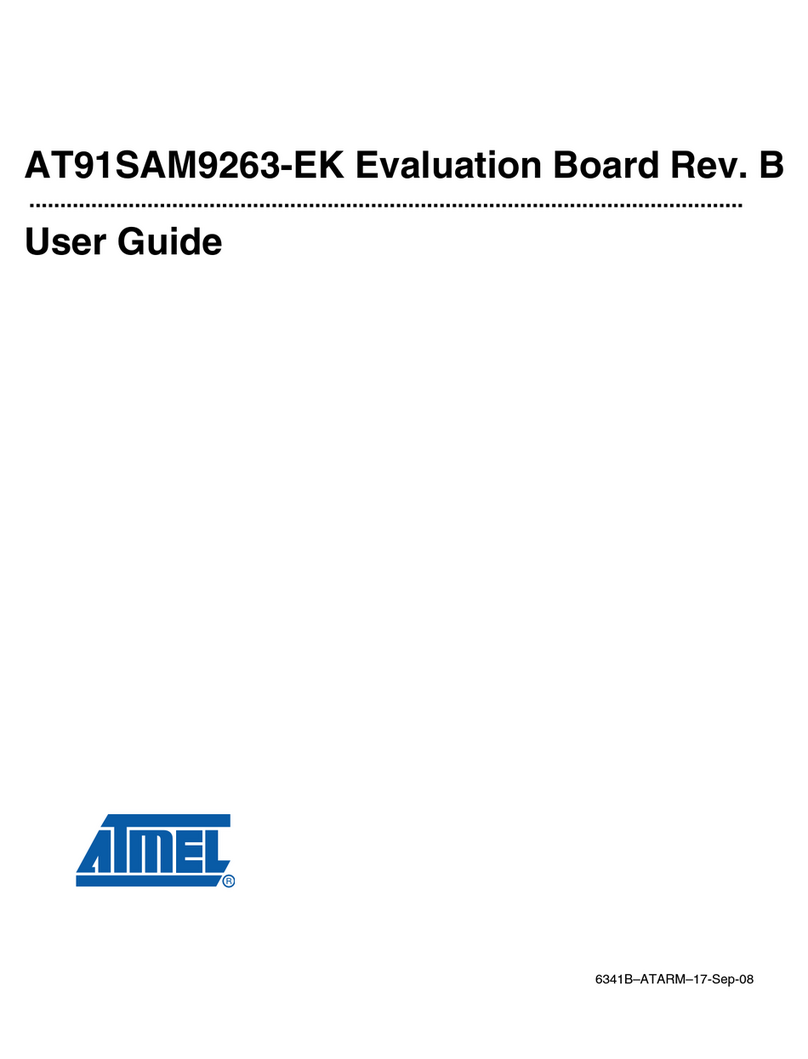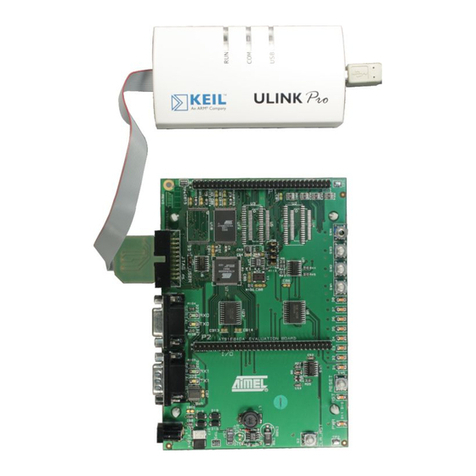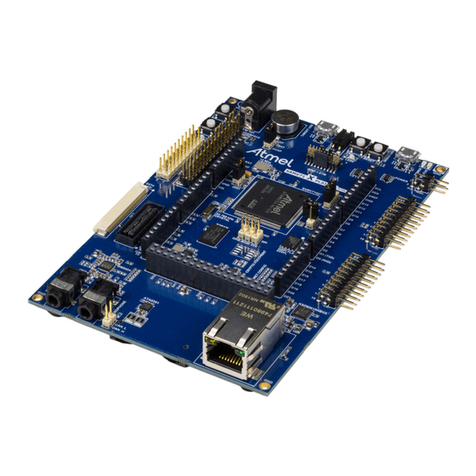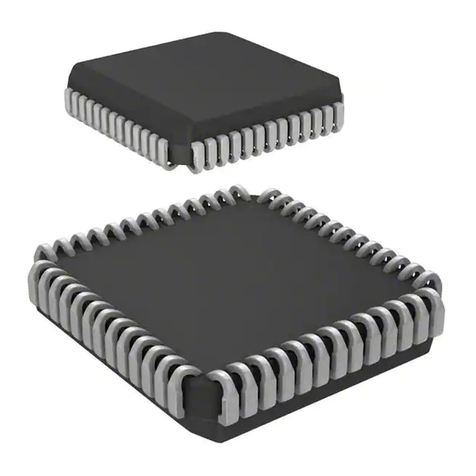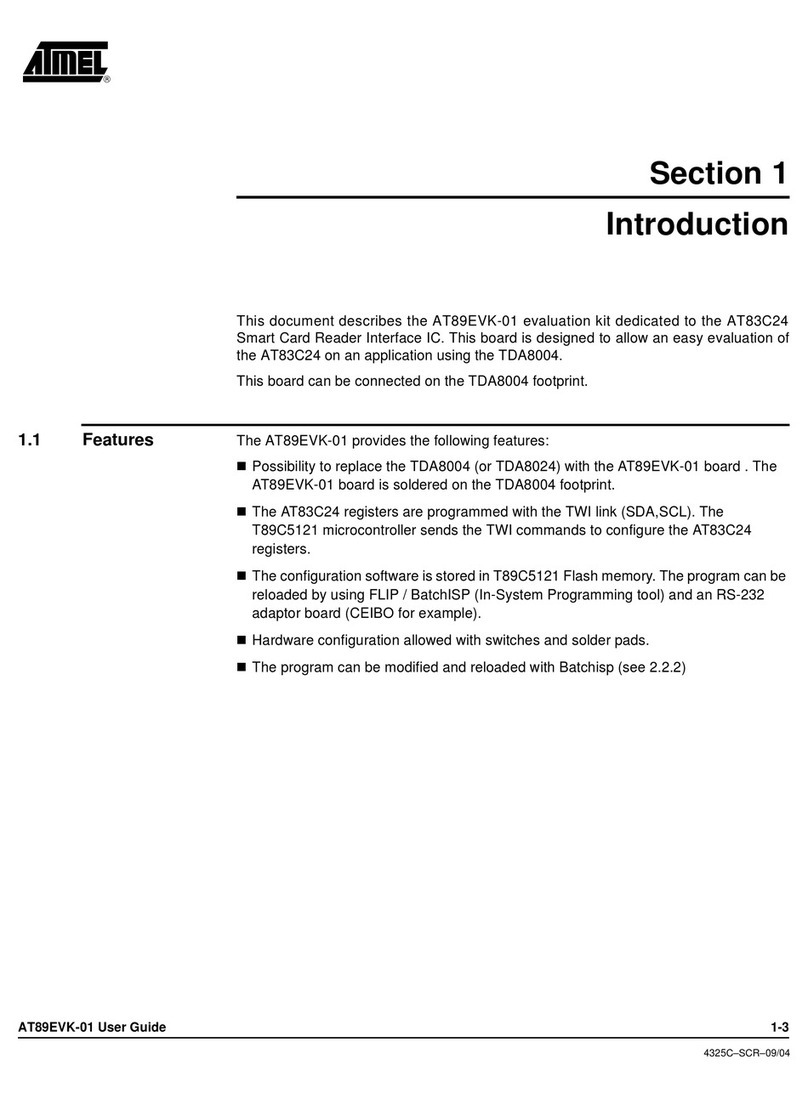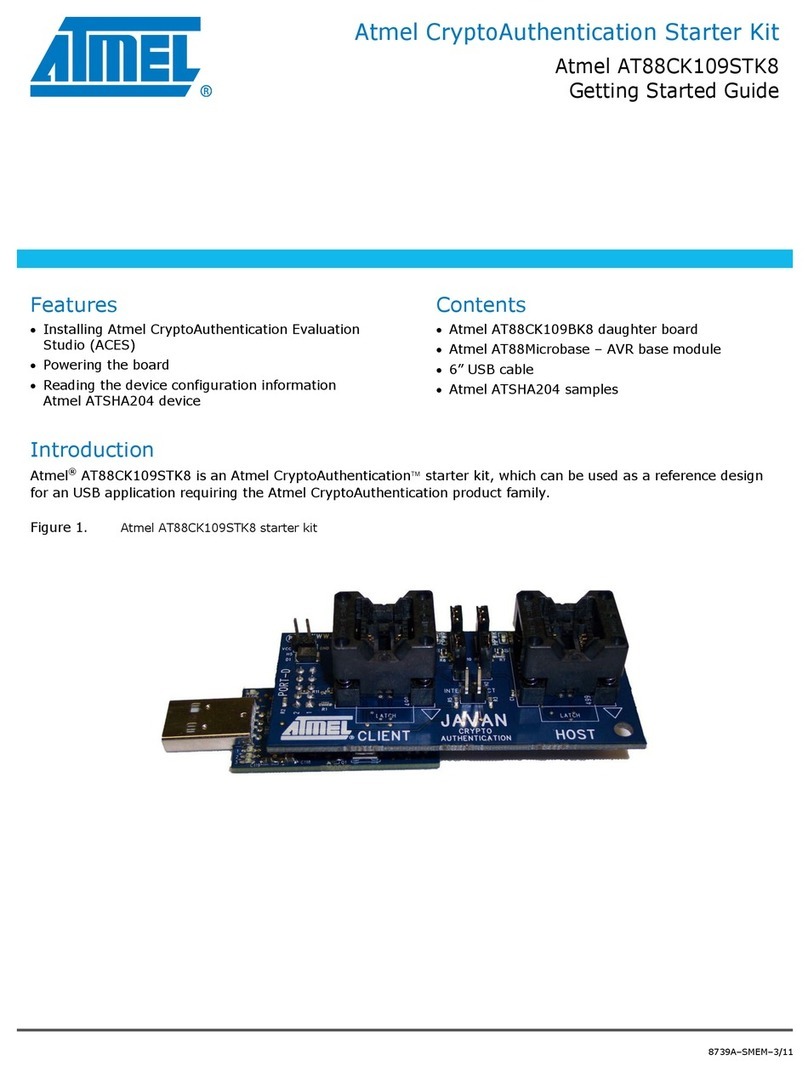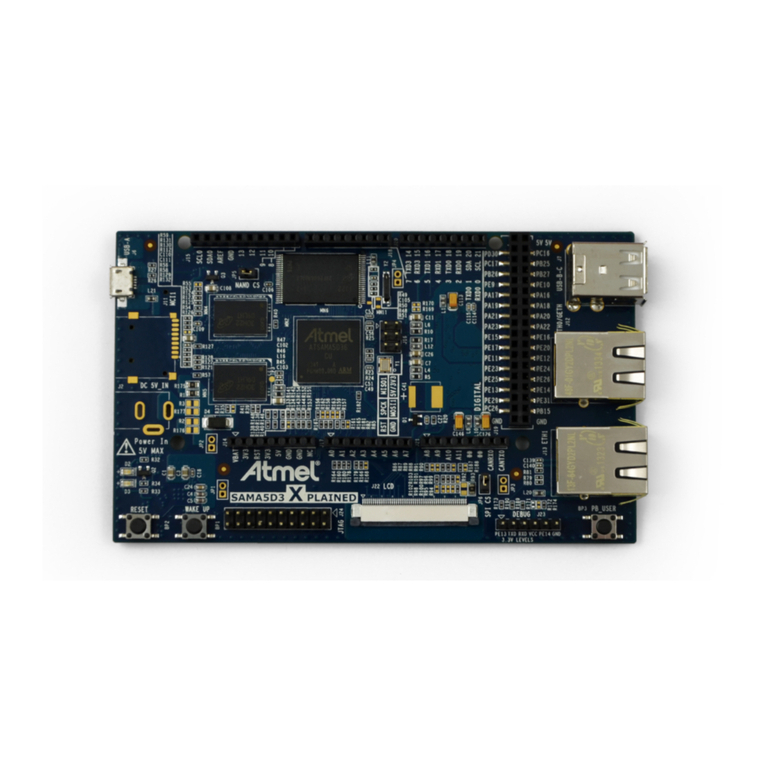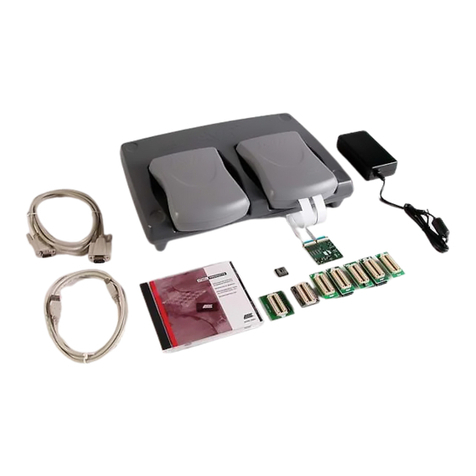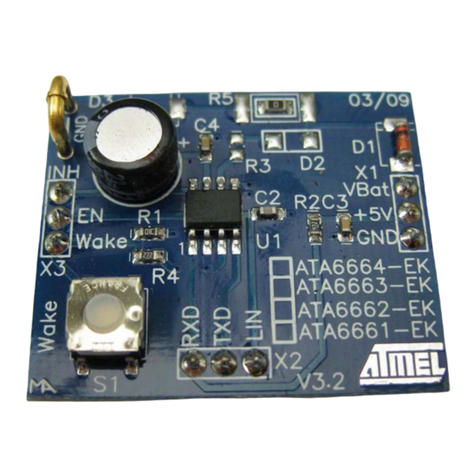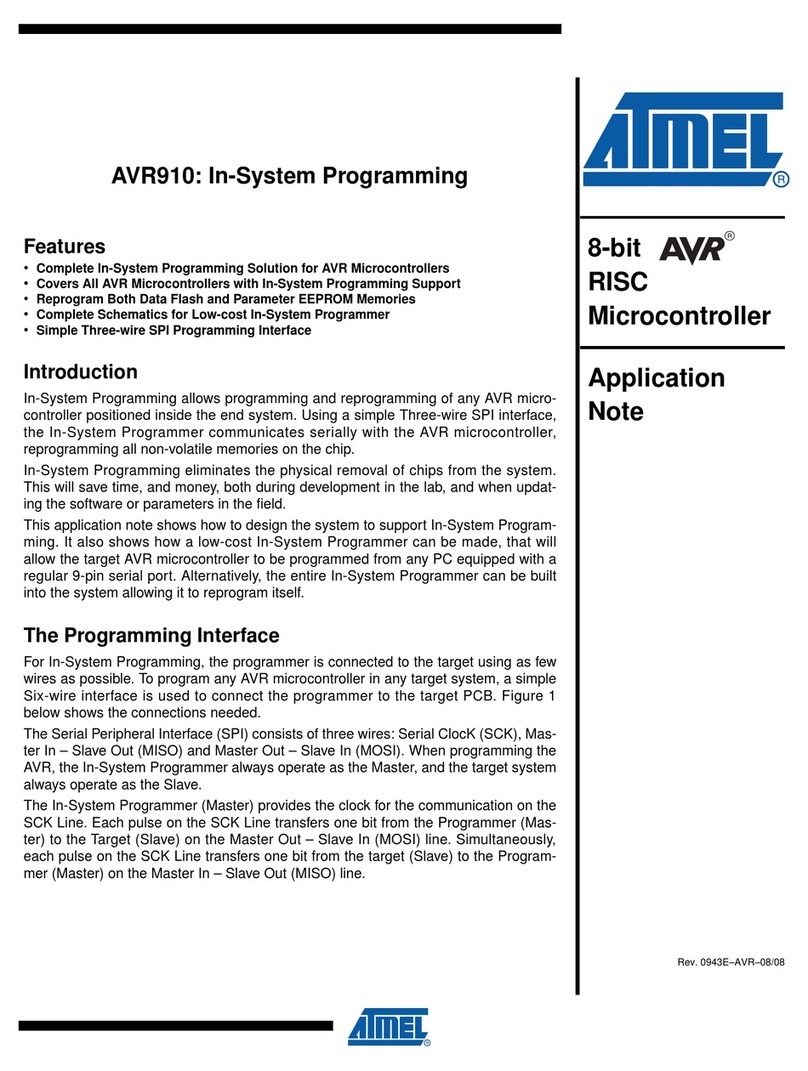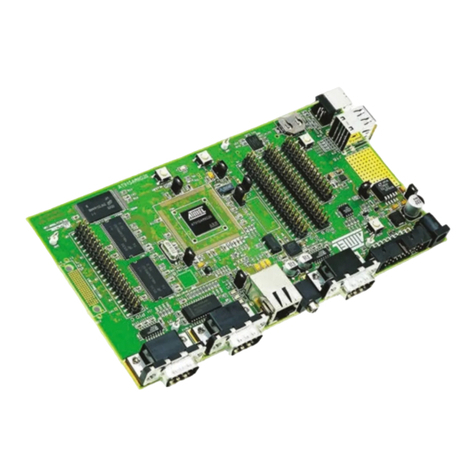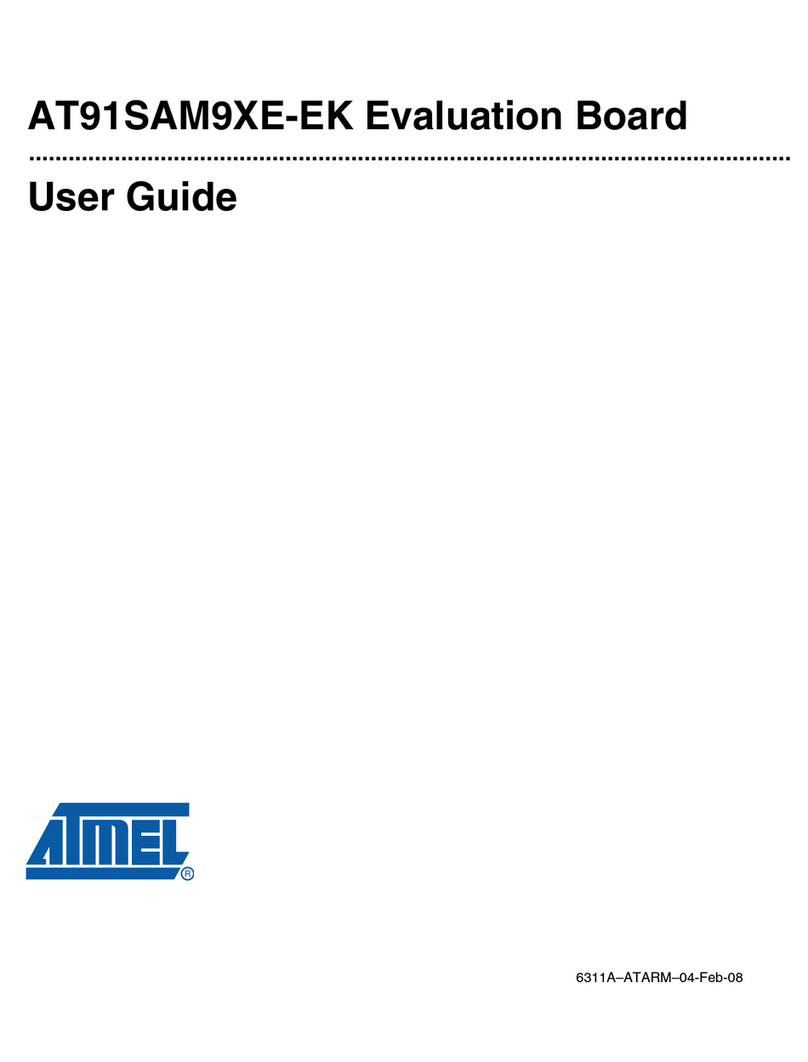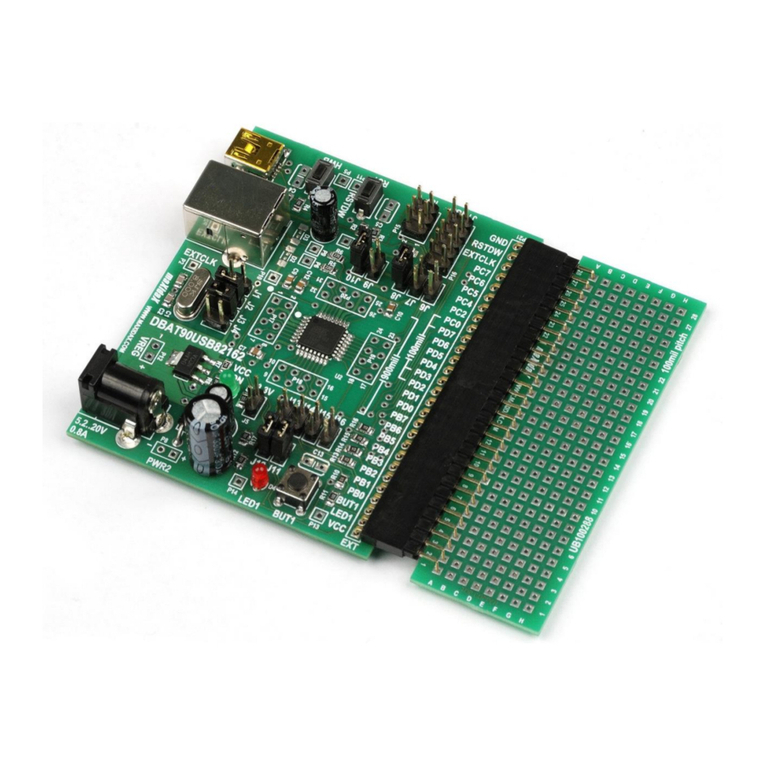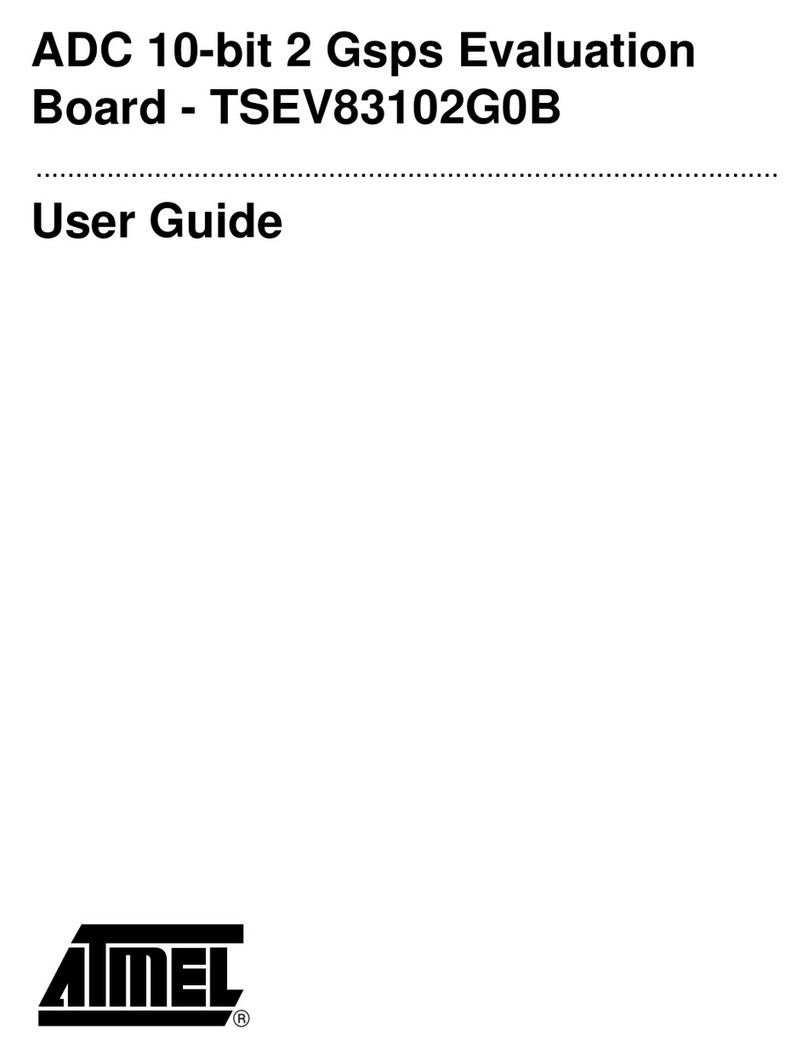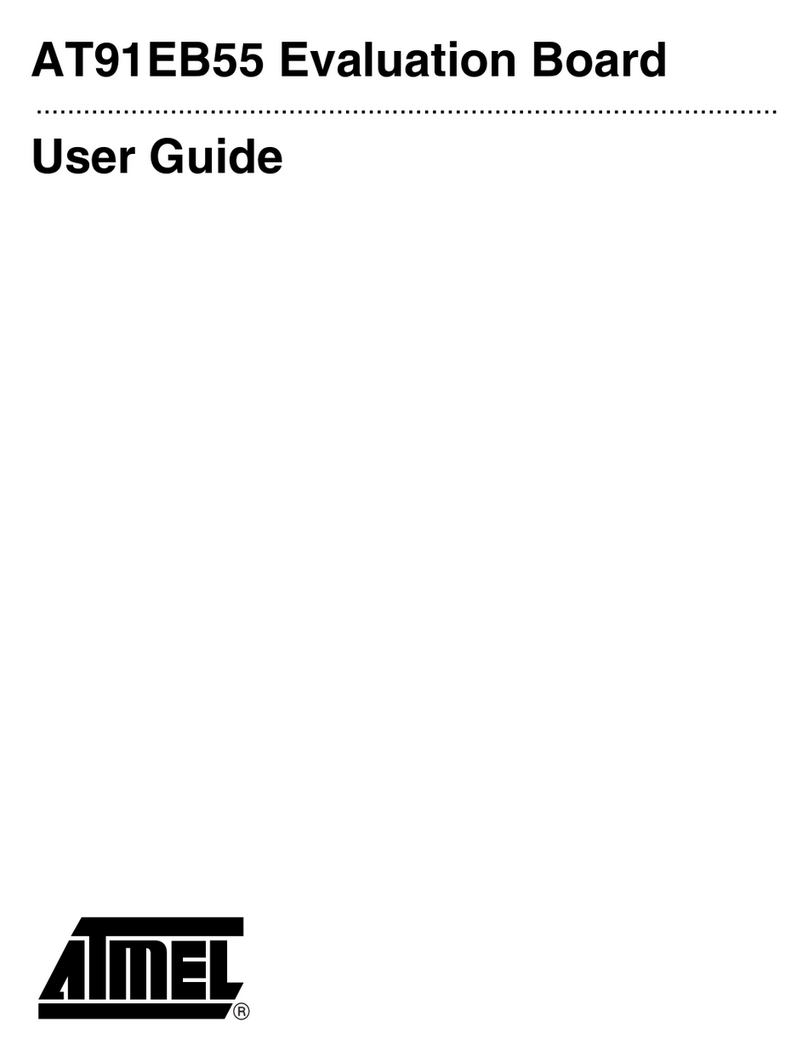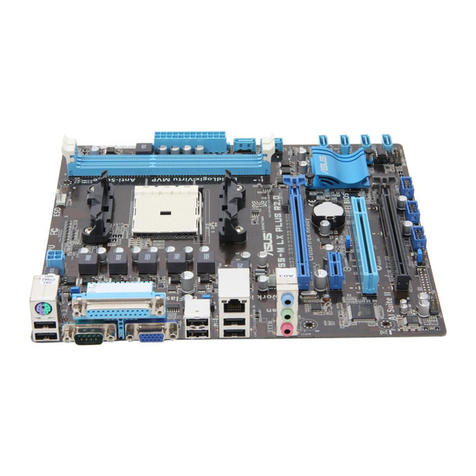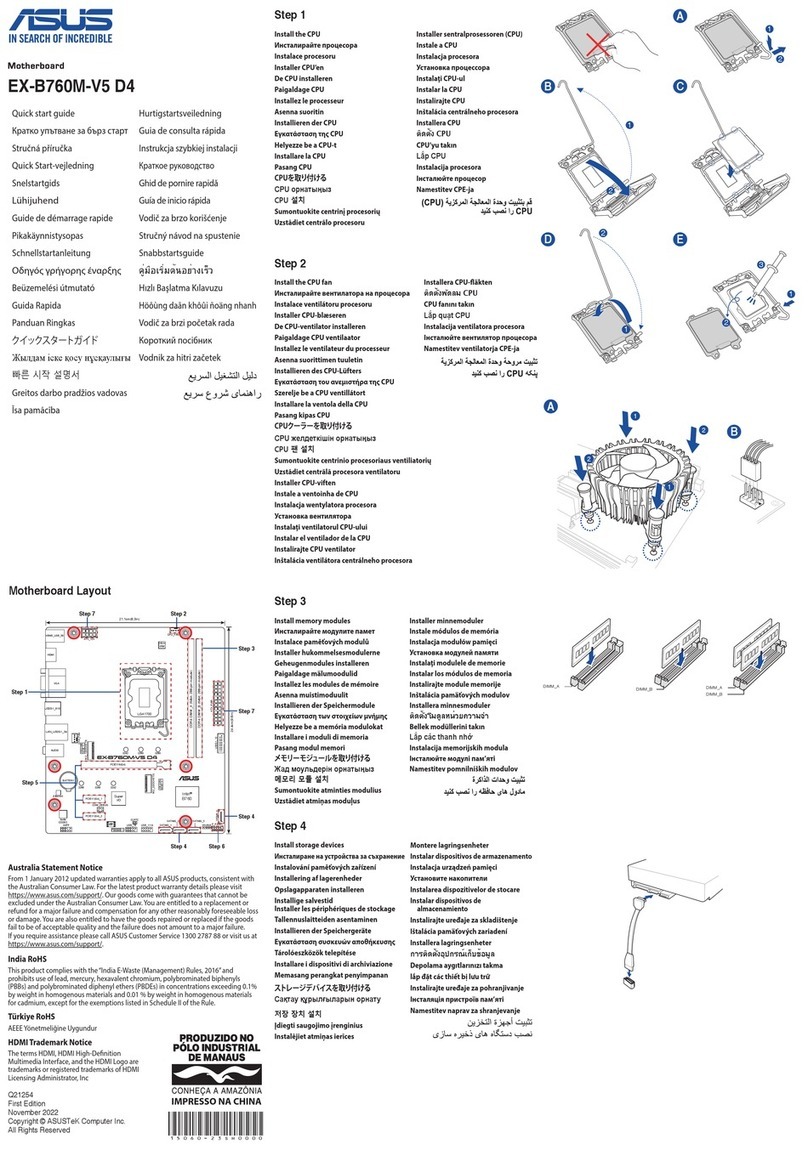
2
SBAT90USB162a Development Board User’s Manual
1. INTRODUCTION
Thank you for choosing the SBAT90USB162a –Atmel® AT90USB162 development
board. This board is designed to give a quick and cost-effective start to develop
code and for hardware prototyping and testing.
1.1. OVERVIEW
This document describes the SBAT90USB162a development board –a cost-
effective yet feature rich, flexible and easily configurable development tool,
designed to allow easy coding and prototyping.
One of today's most widely used MCUs offering native USB support is the Atmel®
AT90USB162. It provides an easy way to add USB functionality to any new design
along with hundreds of different projects that are available.
The SBAT90USB162a is an Atmel®AT90USB162 development board. This board
is a cost-effective yet feature-rich, highly compatible, flexible and easily
configurable development tool, designed to give a quick start to develop code and
for hardware prototyping and testing. It is a clean in design solution, but still
providing configurability and flexibility not available with other products. The board
provides all the basic circuitry needed to work with AT90USB162: USB connector
and circuit, crystal, Reset and HWB buttons, power LED, power source/voltage
configuration circuitry, ISP header.
The board offers flexible power configurable via jumpers: both 3.3 V and 5 V USB-
powered or from external supply.
The board also features 100 mil headers, making it breadboard-friendly and easily
connectable to any universal board or prototyping environment.
Board design makes it compatible with other similar development boards featuring
same or similar MCUs and virtually all design/development software and libraries,
including open source.
MCU comes pre-programmed with a bootloader allowing code to be programmed
into the chip without any external programmer –simply by using FLIP software
from Atmel. To enter the bootloader mode, the RST button should be pressed and
hold, then the HWB button pressed and the RST button released.
An ISP programmer still can be used via dedicated ISP header, as well as
debugger like JTAGICE via same header.
